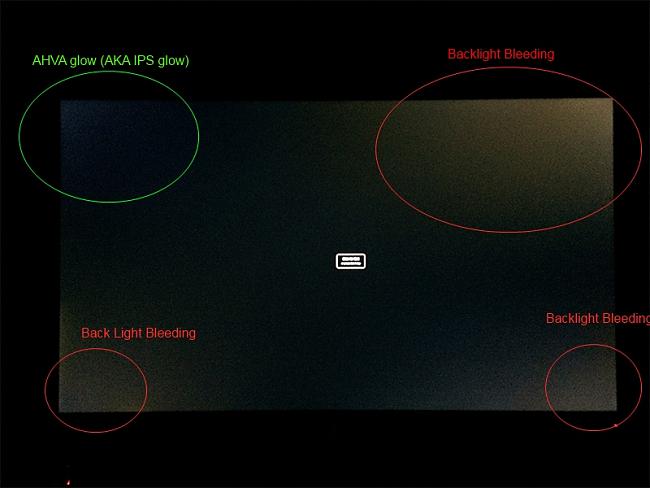Gaming Monitor Buying Guide
Here are all the features you should consider before upgrading your old monitor:
Panel type
TN
This type of panel is characterised by being the best in terms of response time but loses a lot in colour quality compared to other types of panels. If you are a gamer looking for the limits of performance without regard to colour quality you should opt for this type of panel.
IPS
These panels are the most commonly used as they have a very good colour quality, although the response times are a bit worse than TN panels. It should also be noted that almost no one who is extremely objective is going to notice this slight "lag". Also something we should know about this type of panel is that to a greater or lesser extent we are going to have light leakage or bleeding. They are more expensive than TN, but for anyone looking for a monitor to enjoy gaming quality at a good price, we would definitely recommend this type of panel.

VA
The newest panel type in the latest range of monitors. They have good colour rendering, allow higher refresh rates and brightness enhancement well above other panel types. This makes them perfect for incorporating HDR, so most of these panels will have this feature. But it's not all advantages, these panels have higher response times than IPS panels (some are up to 12ms) and combining this with a high refresh rate many of them have the problem of high ghosting or blur. Ghosting or blur is a small trail that an object leaves behind when viewed in motion.
Ghosting:


Aspect ratio
16:9
The most typical aspect ratio we can find.
21:9 or Ultrawide
One of the newest aspect ratios that is characterised by its new width. Almost all games are now compatible with this aspect ratio.
32:9 or Super ultrawide
Equivalent to two 21:9 monitors sharing the same dimensions. Fewer games are compatible than 21:9 but more and more are becoming available.

Resolution
1080p
A resolution that is going to offer us what has been for a long time a standard for almost all the users but that due to the advance of the technology and the new graphics is losing a lot of potential in the market, since the users want something more. This resolution makes the price of any monitor much cheaper.
2K
The resolution that we recommend the most because any of the current graphics cards can offer a good performance at this resolution and we will get a much better experience than with 1080p.
4K
For this resolution we will have to be more careful if we don't want the fps of our games to be affected, so we recommend at least an RTX 2080 SUPER to enjoy this resolution to the fullest.
>4K
A crazy resolution but currently is not very well accepted by the games and we will need a very good pc to be able to move these resolutions. Our advice if you opt for this resolution is at least a RTX 2080 Ti.
Frequency or refresh rate
60Hz
The only reason why you would have to opt for this limited refresh rate could be to reduce the price or because you are not going to play games with a lot of movement, but... Do games without a lot of motion actually exist?
100Hz
A big step up from 60Hz as you will notice a much higher fluidity in camera movements, object movements, etc. The minimum recommended especially for shooters.
120Hz
A good jump from 100Hz but here you won't notice such a spectacular difference.
>120Hz
From here on it depends on whether you can exceed 120 fps and on the individual. Some will notice it more and others less, but it is definitely made for the most demanding gamers.
Response time
1ms
Only a very limited number of gamers will appreciate such a low response time compared to e.g. 4ms.
4ms - 6ms
A response time recommended for players who compete or want to compete in any online game where reflexes are required. However, this is not going to make you any better, but in some circumstances it can be minimally determinant.
> 6ms
If you want to sacrifice a bit of response time to lower the price without being a demanding gamer, it's perfectly acceptable, so it won't affect much. But be careful that it is not extremely high.
Gsync-FreeSync
G-Sync
Avoids tearing and brings a lot of smoothness to the movement of cameras and objects.
FreeSync
Does the same function, but with the advantage that it is cheaper and many monitors are G-Sync compatible.
HDR
This new technology tries to manage the brightness in a dynamic way, that is to say, the video, image or game will send signals HDR to our monitor which will have to interpret these signals to illuminate more or less different zones of our monitor obtaining this way an effect of spectacular colour. It is necessary to emphasize that there are different types of HDR as the HDR 400, HDR 600 or HDR 1000 and each one of them is differentiated by the level of brightness to which they can arrive, for example the HDR 600 can arrive up to 600 nits of brightness and the HDR 1000 up to 1000nits of brightness.
Is HDR worth it?
Currently the number of games and videos that support HDR is very small, but it will increase over time. On the other hand among the different types of HDR, we recommend the 1000nits HDR as there is a big difference between it and its smaller brothers. It all depends on how much money you are willing to spend and what kind of games you want to play.
